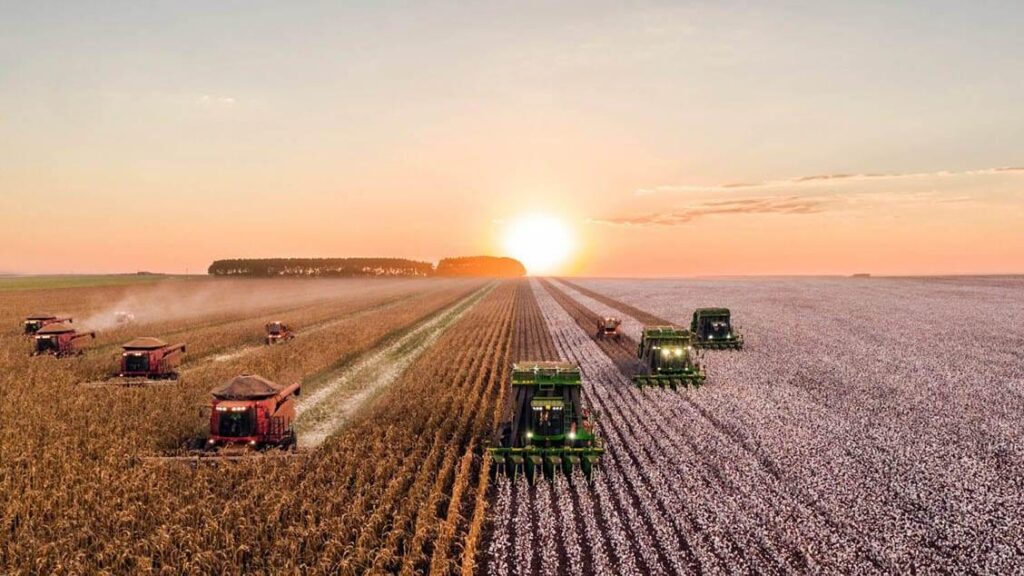As the agricultural landscape continues to evolve, today’s farm economy is drawing comparisons to the turbulent 1980s-a decade marked by financial strain, fluctuating commodity prices, and mounting debt. While the challenges facing modern farmers share some familiar echoes from that era, differences in technology, market dynamics, and policy frameworks offer both new risks and opportunities. In this article, we examine how today’s farm economy stacks up against the 1980s and explore practical strategies that farmers can adopt to navigate current uncertainties and build resilience for the future.
Farm Economy Then and Now Comparing Market Conditions and Price Trends
Market conditions in the 1980s were defined by high interest rates, volatile commodity prices, and significant debt burden for farmers, which led to widespread economic stress across rural America. Fast forward to today, and while some challenges persist-such as fluctuating crop prices and unpredictable weather-farmers now operate in an environment with greater access to technology, diversified income streams, and improved financial tools. Unlike the 1980s, where price swings were often driven by geopolitical tensions and tight credit, modern market forces include global trade policies and rapid innovation in agricultural inputs.
Key differences in market dynamics include:
- Commodity Price Stability: Prices today tend to have shorter, more frequent cycles versus the prolonged downturns of the 1980s.
- Access to Credit: Financial institutions now offer more tailored lending options with lower interest rates, reducing the risk profile for growers.
- Technology Impact: Precision agriculture and data analytics allow for better yield prediction and cost management.
- Global Influence: Increased international demand and trade agreements have diversified market exposure.
| Aspect | 1980s | Today |
|---|---|---|
| Average Interest Rates | 14% – 20% | 3% – 7% |
| Commodity Price Volatility | High, long cycles | Moderate, frequent swings |
| Technology Access | Limited | Advanced (drones, sensors) |
| Global Trade Impact | Minimal | Significant |
Challenges Facing Modern Farmers Lessons from the 1980s Crisis
During the 1980s farm crisis, skyrocketing interest rates and plummeting commodity prices devastated rural economies, forcing many farmers into bankruptcy. Today’s agricultural landscape echoes some of those past hardships, but with new complexities such as global trade uncertainties, climate change pressures, and fluctuating input costs. Farmers currently grapple with volatile markets that echo the unpredictability of the 1980s, while also navigating modern challenges like technology investments and supply chain disruptions that compound financial stress.
Learning from the past, seasoned experts emphasize the importance of:
- Diversifying income streams through on-farm value-added products or alternative crops
- Utilizing financial tools such as futures contracts and crop insurance strategically
- Investing in sustainable practices that enhance soil health and reduce input dependence
- Building strong local networks to improve market access and share resources
| 1980s Crisis | Today’s Farming Economy |
|---|---|
| Interest rates above 18% | Input costs rising 5-10% annually |
| Commodity prices fell 40% in a year | Market prices fluctuate with trade deals |
| High farm bankruptcy rates | Increasing farm consolidation trends |
| Limited technology adoption | Rapid integration of precision ag tech |
Strategies for Success Practical Steps to Boost Resilience and Profitability
Farmers today face an ever-evolving landscape marked by fluctuating commodity prices and increased input costs, making resilience a cornerstone of sustainable operations. To build this resilience, diversification remains a powerful tool-integrating alternative crops or livestock can cushion against market volatility. Moreover, leveraging technology, from precision agriculture to data analytics, allows farmers to make informed decisions, optimize input use, and reduce waste. Engaging with local cooperatives or direct-to-consumer sales channels can further stabilize income by creating stronger community ties and better price negotiations.
Success also hinges on disciplined financial planning and risk management strategies. Consider the following practical steps:
- Regularly update crop budgets to reflect current input prices and yield projections.
- Establish emergency funds to offset unexpected downturns or weather events.
- Utilize forward contracting and crop insurance to mitigate price and production risks.
- Invest in ongoing education and peer networking to stay ahead of market trends and technological advancements.
| Strategy | Benefit | Implementation Tip | ||||||||||||||
|---|---|---|---|---|---|---|---|---|---|---|---|---|---|---|---|---|
| Crop Diversification | Risk Reduction | Start with a pilot plot to test viability | ||||||||||||||
| Precision Ag Technology | Cost Savings | Integrate GPS-guided equipment gradually | ||||||||||||||
| Forward Contracting | Price Stability |
| Strategy | Benefit | Implementation Tip |
|---|---|---|
| Crop Diversification | Risk Reduction | Start with a pilot plot to test viability |
| Precision Ag Technology | Cost Savings | Integrate GPS-guided equipment gradually |
| Forward Contracting | Price Stability | Negotiate contracts early in the season |
| Crop Insurance | Risk Mitigation | Review coverage annually to match changing risks |
If you’d like me to help you with anything else regarding this content, such as summarizing it, enhancing it, or converting it to another format, please let me know!
To Conclude
As farmers navigate the complexities of today’s agricultural economy, understanding the parallels and divergences from the 1980s provides valuable perspective. While challenges such as market volatility and rising input costs persist, modern farmers have access to new tools and strategies-from advanced technology to diversified income streams-that can help weather economic uncertainties. By learning from past cycles and embracing innovation, the farming community can position itself for greater resilience and long-term success in an ever-evolving landscape.
